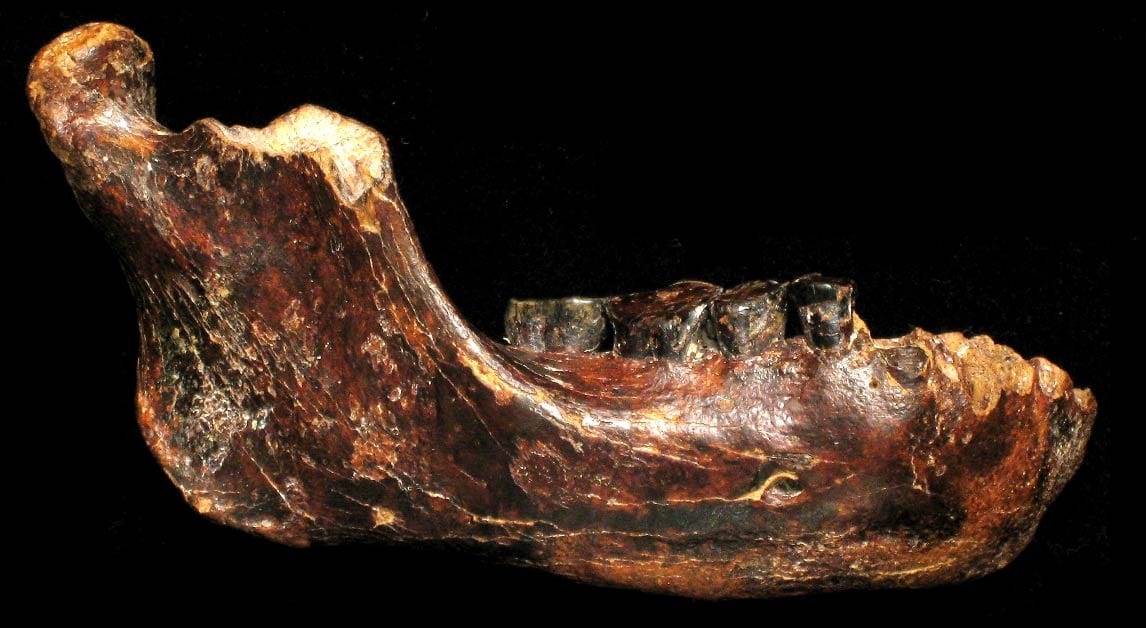
The first ancient human fossil found in Taiwan may indicate the presence of an unknown archaic species of humans who lived in Asia during the Pleistocene era, possibly hundreds of thousands of years before modern humans arrived.
The complete right-lower jaw and teeth, found in the deep waters of the Penghu Channel, west of Taiwan, was pulled from the seafloor by a fishing net. The surprisingly primitive specimen, dated through analysis to have originated from between 10,000 and 190,000 years ago, may prove to be from an unknown species of human.
“During the Pleistocene Epoch, which lasted from about 2.6 million years ago to 11,700 years ago, humans generally evolved smaller jaws and teeth, but the new fossil from Taiwan appears larger and more robust than older Homo erectus fossils from Java and northern China,” LiveScience reports on the discovery.
A study analyzing the find, published in the journal Nature Communications, suggests that multiple lineages of unknown, now-extinct humans may have existed side-by-side in Asia eons before the arrival of modern humans approximately 40,000 years ago.

The Penghu 1 mandible, jaw and teeth in various orientations
The jaw, dubbed Penghu 1, is similar to a fossil found relatively nearby, in Hexian, southern China, dated to 400,000 years ago. These fossils may indicate a new species of humans, but researchers are reluctant to confirm that pending further finds.
Yousuke Kaifu, paleoanthropologist at the National Museum of Nature and Science in Japan and co-author of the study told LiveScience, “We need other skeletal parts to evaluate the degree of its uniqueness. The question of species can be effectively discussed after those steps.”
As reported just this week, the skull fragments and teeth discovered in 1976 in a cave in Xujiayoa, China are raising surprising questions about the prehistoric origins of humanity. Dental remains were recovered from four different individuals, and were examined for size, shape and surface of the teeth, as well as other defining characteristics. When the teeth were compared to a database of over 5,000 teeth of known species, María Martinón-Torres of the National Research Centre on Human Evolution found that they did not match any of the accepted hominids.
BBC Earth reported on the Xujiayoa teeth, “We know there were as many as four other early humans living on Earth when modern humans were still confined to Africa. The Neanderthals lived in Europe, the Denisovans in Asia and the “hobbit” Homo floresiensis in Indonesia: plus there was a mysterious fourth group from Eurasia that interbred with the Denisovans.”
The question is now whether all these Asian fossils represent a hybrid of known prehistoric humans, or whether scientists have an entirely new human species on their hands – or several!
The Penghu 1 jaw and teeth, combined with the recent examinations of the Xujiayoa, China teeth and skull fragments, add up to discoveries challenging the established theory on the history of modern humans. These significant finds may reshape perceptions, and show that the issue of humanity’s origins is far from settled.
Kaifu told LiveScience, “This is a very different, complex and exciting story compared to what I was taught in school.”
Featured Image: Fossilized jawbone, dubbed Penghu 1, found submerged in seafloor near Taiwan. Dated between 10,000 and 190,000 years ago. Credit: Y. Kaifu, CC BY-NC-SA-4.0
Source: http://www.ancient-origins.net/news-history-archaeology/taiwan-jaw-bone-connected-origins-humanity-020183

Paradise
Sounds great
larry h
great find